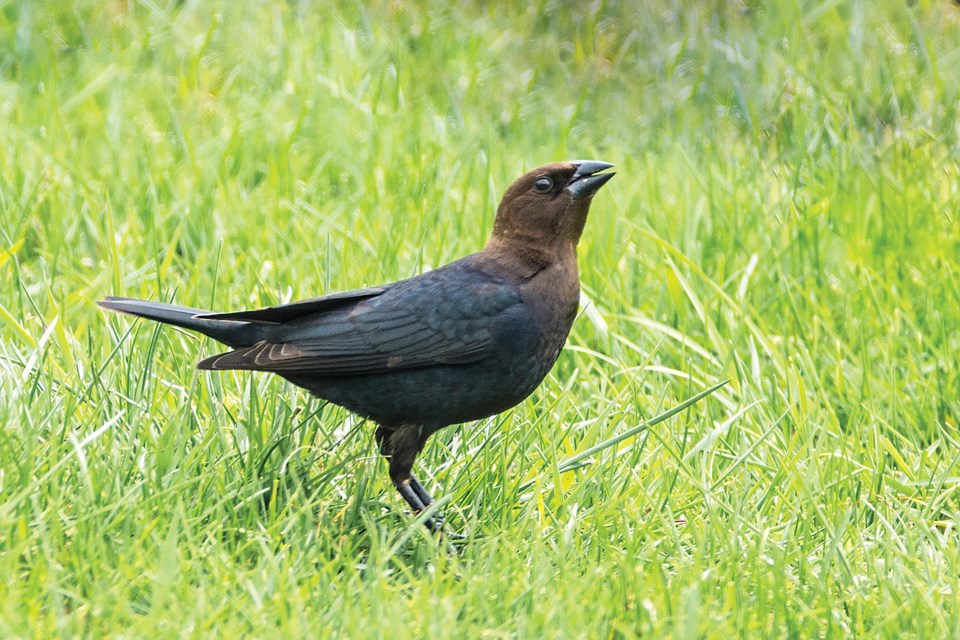For birders the month of July has a certain melancholy aspect to it as we monitor the progression of bird phenology. March through June is the period of youthful exuberance as birds migrate, the males display their colourful plumages and sing their best songs to attract a mate, and nesting takes place. By July the males moult into their drabber alternate plumage and cease to sing, as the imperative now is to be cryptic to avoid the attention of predators.
Family life goes on, of course, and you can observe fledgling birds accompanying an adult warbler or chickadee and demanding food with a variety of pleading calls. Often seen is a small bird being harassed by a larger, brownish juvenile. are freeloaders and are a North American equivalent of the European cuckoo, which both lay their eggs in the nests of host species and leave the hosts to do all their child-rearing. Cowbirds generally parasitize our local insectivorous species such as warblers and vireos, but they will victimize a wide range of species. Cowbirds were originally confined to prairie grasslands where they accompanied the buffalo herds, and their parasitic breeding strategy evolved in response to the ever-on-the-move herds. Cowbirds spread west of the Rockies as forests were cleared and cattle introduced.
On July 3, a common nighthawk nest in a regenerating clearcut on Mt. Elphinstone contained one egg and a newly hatched chick that was still damp from the egg. On the same evening, a loose flock of 15 nighthawks was observed over west Porpoise Bay. In the next month, watch and listen for the evening flights of nighthawks over towns and low elevations all along the Sunshine Coast. Flights are generally close to dusk and the loose, overhead flock can contain 15 to 20 individuals but sometimes many more. Listen for a sharp peent call and watch for the bird’s zig-zag flight.
Unusual, or rare birds, that were recorded in June include two separate green herons, a pair of redhead ducks, a male American redstart, two brown pelicans near Keats Island, and a California scrub-jay in Selma Park. Redheads are rare on the Sunshine Coast and surprisingly a male appeared in the Sechelt Marsh on the June 11 and stayed for a few days. It departed, and then a female showed up and was present for 10 days. The Bird of the Month was the California scrub-jay present for days in a Selma Park garden. This is only the second Sunshine Coast recording, the last in 2009. This species appears to be slowly spreading into B.C. from the south.
To report your sightings or questions contact [email protected] or 885-5539. Good Birding.




